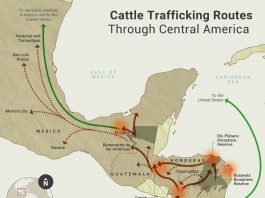With the conversation about raw milk heating up recently (no pun intended), and more legislation being introduced to allow it to be sold at the state and local level, we’ve been wondering about the history of pasteurization and why it became legislated in the first place. Sometimes the reasons we do things get lost once a problem is solved; subsequent generations forget about or are unaware of the problem that led to the solution in the first place. So, to add to the discussion, here’s why we pasteurize milk:
Tuberculosis, Typhoid, Diphtheria, Brucellosis, Cholera Infantum and more….

There is some evidence indicating that human populations began to increase about the same time we domesticated goats, sheep and cattle and then began drinking their milk. So, in a very real sense, milk has made us what we are today. But milk hasn’t always been life-giving. About 150 years ago, we discovered that illnesses are caused by microorganisms or germs. And about that same time, we discovered that some of the deadliest diseases humans faced were a result of drinking milk that contained these microorganisms.
In 1882, German scientist Rupert Koch discovered that bovine tuberculosis could be spread to humans via milk. By 1907, milk containing the pathogens for tuberculosis, typhoid and diphtheria had been linked to the deaths of hundreds of New York City’s children annually. But it was the typhoid epidemic of 1913 that killed thousands of people that finally resulted in action. Public health officials knew that typhoid fever was carried in milk, and that pasteurization could make milk safe to drink so by 1914, 95% of the city’s milk supply was pasteurized. The impact was tremendous. Infant mortality rates dropped from 27% to 9%.
Change Takes a Long Time

Nathan Straus, founder of Macy’s, lost his own son to milk-caused diphtheria in the late 1800s and campaigned for pasteurization for decades. He set up “Milk Depots” offering pasteurized milk on the spot at affordable prices, along with free medical exams for children and hygiene advice for mothers. He started providing pasteurized milk to a local orphanage with a death rate of 42% from tuberculosis and other milk borne diseases. Within a year the death rate dropped to 28% and continued downward in subsequent years.
But in spite of his efforts and those of many like him, in 1938 U.S. public health officials estimated that a quarter of all food-borne illnesses were linked to unpasteurized milk. Over half of the milk in the U.S. was still sold raw. In 1943, Edsel Ford, the 49 year old son of Henry Ford died of undulant fever (Brucellosis) brought on by drinking unpasteurized milk from one of the family farms. The swing to nationwide pasteurization began as World War II ended as states began requiring pasteurization of milk and the federal government banned the interstate sale of raw milk.
Listeria, E. Coli and Campylobacter
Safer, cleaner handling facilities in dairies have also contributed to reduction in milk-borne diseases. But no matter how clean you are, it’s hard to get rid of bacteria that just naturally exist in even healthy animals, like Listeria, E. coli, and Campylobacter. The symptoms of infection for each of these bacteria are similar and include diarrhea (sometimes with blood) vomiting, fever and headaches. Each of them can result in serious or fatal infections in children, the elderly, and anyone with a compromised immune system.

It can be worse though. Listeria can cause miscarriages and still-born births in pregnant women. E. coli can cause complete kidney failure and this outcome has been documented in a number of recent cases. In one, a 23 month-old little girl suffered a stroke, and underwent transplant surgery to receive one of her mother’s kidneys. At the age of 3 she takes all her food through a feeding tube, cannot walk or talk and goes to physical and speech therapy five times a week.
Public health officials are especially concerned about Campylobacter which is the fastest-growing cause of raw milk related illnesses. In two recent cases campylobacter infections have have triggered Guillain-Barré syndrome in the victims resulting in paralysis.
Pasteurization kills bacteria and diseases, and increases milk’s shelf-life.

There are two levels of pasteurization. The most common in the U.S. is High-Temperature, Short-Time, where milk is forced between metal plates or through pipes heated on the outside by hot water to 161 degrees F for 15 seconds. This kills 99.999% of the viable microorganisms in milk. Because many of the bacteria that could cause spoilage are killed by pasteurization, HTST milk’s shelf life is longer, lasting about 2 to 3 weeks once its packaged. Ultra-High Temperature pasteurization holds the milk at 280 degrees F for 2 seconds. When combined with sterile handling and containers UHT milk can be stored unrefrigerated for 6 to 9 months. This type of pasteurization is particularly popular in Europe because of the high cost of transporting milk in refrigerated trucks.
Should People Have a Choice?
People can choose to smoke, to drink alcoholic beverages, and in some states to partake of marijuana. Most of us have received the education that describes the health consequences of those items so that we can make informed choices. Perhaps the same should be said for raw milk.





Kathy,
We are fans of your work on animal nutrition, which is why we are a little disappointed in this article.
My main issue is your article, as written, is misleading to the casual reader.
Your article deals with two types of milk-borne diseases: (1) communicable diseases where an infected cow transmittes the disease through unpasturized milk and (2) diseases that are the result of contamination of the milk after milking.
The the milk-borne diseases that led to pasturation were of the first type, such as TB, typhoid, diptheria, brucellosis and the like. These are diseases that, in the developed world, have been largely eliminated by vaccines. Dairy cows can be vaccinated against them or tested for them, as well. That means that pasturization is largely unnecessary to combat those diseases in the developed world.
It also means that elmination of pasturization would not lead to a dramatic increase in food-borne illness in the developed world based on the spread of TB, typhoid, diptheria, brucellosis and the like.
As to contamination of the milk after milking, pasturization does kill Listeria, E. Coli, etc. Unpasturized milk, coupled with unsanitary handling systems could increase the incidence of the type of food-borne illness we now associate with spinich, cantalope, and under-cooked ground meat, none of which we require to be pasturized. However, I would expect that the incidence of those contaminations in raw milk productionto be at a much lower level than the level of contamination caused by communicable diseases in an era prior to our ability to vaccinate and test for those diseases.
This lack of connection between the magnitue of milk-borne diseases at the time pasturization was introduced and the likely level of milk-borne disease in a modern envoirment makes your article, in my view, misleading to the casual reader.
Also, we lack research on the true benefits of raw milk so that those can be weighed against the true risks of raw milk. Also, there are tools to combat food-borne disease in raw milk other than pasturization, so that simply casting the issue of food-borne disease as one of pasturization is overly simplistic, particularly if one believes that there are benefits to consumption of raw milk.
As I write this, I am sitting in Follensbee Inn in North Sutton, New Hampshire, where Denis, the Innkeeper, has just brought Anne and me freshly baked cookies, which we will have will a glass of raw milk (100% Milking Devons) that we purchased from Bunten Farm in Orford, NH a few days ago.
The intent with this article was simply to provide a history of why pasteurization of milk became routine in the U.S. We think it’s important information for folks to know. As we did our research, we did anticipate that someone would wonder if stopping pasteurization might be ok because the diseases we were initially concerned with might no longer be a problem. Do vaccinations and updated sanitary conditions protect us? Here’s what we gathered:
• Of these diseases, we only vaccinate for one, and that one, diphtheria, is typically a human vectored disease. In the U.S. we usually get the Tdap vaccine at the age of 11 or 12. This protects us from Tetanus, Diphtheria and Whooping Cough. Then we have to get a Td booster for tetanus and diphtheria every 10 to 12 years. Back when scientists first discovered diphtheria bacilli growing in milk, it was unclear if diphtheria was a result of cattle being or the people doing the milking. They did find that milk was a very good growing medium.
• In the U.S. we do not vaccinate for Typhoid. Vaccinations are only recommended if you are traveling to a country where typhoid fever is common such as places in Asia, Africa, and Latin America. According to the Centers for Disease Control, travelers should get vaccinated 1-2 weeks before traveling, but should still take precautions with what they eat or drink because the vaccine is not always effective. Vaccinations must be repeated every few years as they lose their efficacy. Typhoid fever is the result of Salmonella serotype Typhi pathogens which can be shed in the feces of cows, or can be present on their udders. Researchers and health officials are now concerned at the rise of multi-drug resistant Salmonella serotype Typhi.
• There is no vaccine for brucellosis in humans. Vaccines for animals can actually cause the disease in humans. As in animals, the disease causes miscarriages and still births in humans. Symptoms include fever, profuse sweating, headache, fatigue, depression, loss of appetite, irritability, cough, chest pain and upset stomach. Most people recover fully, but it can also affect bones and joints causing arthritis. If untreated it can become latent and then recur after many years. Chronic complications such as endocarditis (inflammation of the heart lining) and meningitis have occurred.
• Regarding vaccines for Tuberculosis, TB expert Dr. Neil Schluger says that we don’t vaccinate in the U.S. “because we don’t have enough TB to make it worthwhile to vaccinate the entire population. It’s expensive and complicated to do that but around the world, [BDG] is a very widely used vaccine. No matter how much it works, and people argue about how well it works, it clearly doesn’t work well enough because, as I said, it’s the most widely used vaccine in the world, and TB is still the eighth leading cause of death and TB cases around the world have not declined at all in a very long time, so we need a new vaccine for sure. I would say that at the rate we’re going eradication of TB globally is not within sight. We just don’t have the tools. The bad news though is, from everything I can see, it’ll be at least 20 years — and that might be an optimistic estimate — before there’s a better vaccine available.”
That said, the kind of TB that we get from cows is not the TB that there is a vaccine for. Mycobacterium Bovis is carried in cattle, deer, bison, and elk, and often the animals have no symptoms of this disease. According to the Center for Disease Control, M. Bovis is responsible for less than 2% of the total cases of TB in the U.S, noting that the disease was once common in the U.S. but has been greatly reduced by decades of disease control in cattle and routine pasteurization of cows’ milk. In humans the disease is resistant to pyrzinamide, an antibiotic typically used to treat the other form of TB noted above.
As for modern-day sanitary farm facilities, we have no doubt that producers are doing their very best to bring us healthy, pathogen free food. And we do pretty darn well. Yet, we still have outbreaks of illnesses caused by contaminated food. As a result of pasteurization, milk represents less than 1% of those outbreaks. Of the outbreaks related to milk between 1998 and 2011, 79% were due to raw milk or cheese. These resulted in 2,384 illnesses, 284 hospitalizations, and 2 deaths.
Are there nutritional benefits from drinking raw milk? The research, and there is actually a good deal of it, says the differences in vitamins and enzymes between raw and pasteurized are so minor that they are not significant. A recently released study, partially funded by the Weston A. Price Foundation, on lactose intolerance being reduced by drinking raw milk found that there was no difference between raw and pasteurized milk.
What we interpreted from this is that the science of protecting us from diseases with vaccines or medications isn’t as good as what we can do for ourselves by using the science of killing the bacteria and pathogens first. That said, if you know the risks, and can mitigate for them, then go ahead and enjoy your cookies and raw milk.
Your Editors, Kathy and Rachel
Very touchy, indeed. Most foods can be associated with disease and death. Some of us believe Raw Milk is getting a Raw Deal. There are a lot of people out there who believe cows shouldn’t eat weeds – they are TOXIC! I am very disappointed by the one-sided approach of the “research” for this article and the inflammatory title.
Hi Anne,
I started this article with a sincere question in my mind, because I really didn’t know why it became common to pasteurize milk. I had no idea about the history, and this is just what I found out. These are the health issues that were once associated with milk, and aren’t any longer, and if I had found another side to that history as I did my research, I would have shared it.
As for the title, well, two things…I think it represents what Milk does for us, and used to do to us. And…it was also an experiment on my part. Rachel and I talked about that a lot before we published the article with this title. I advocated for the experiment because I’ve been noticing what articles I choose to read based on the headlines, and what our readers look at based on our headlines. In general we all seem to be drawn to the dramatic. I realized that the title was dramatic, but I thought it would also be a useful way of drawing people to the article so that they would take the time to read some history.
I drank raw milk whenever I visited my Grandpa’s Kansas dairy farm when I was growing up, and Rachel has consumed raw milk as well. It’s not so much that we have an axe to grind with raw milk as we think that there is some information that folks might like to have as they make choices. With my lack of knowledge about why pasteurization occurred nationwide, I thought others might be missing the same background. This is just information for the ongoing discussion. If we’re going to sell and drink raw milk we should know about potential problems and how to mitigate for them.
As you noted, other foods can and do cause disease and death and I have collected information on that as well as a possible follow up to this article.
Thanks for writing and for reading. We appreciate your participation!
Very touchy article in some discussion groups. Like most people growing up on farms and ranches, we drank whole milk. And yet, the science is confirming diseases can be present. This is one of those decisions that has no absolute answer.
Comments are closed.